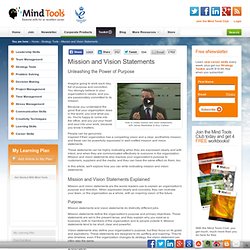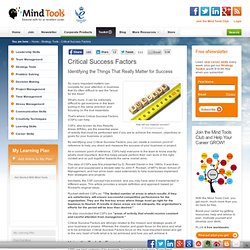

Overcome Obstacles to Change. Change Management. Cause and Effect Analysis (Fishbone Diagrams) - Problem Solving Tools from MindTools. Identifying the Likely Causes of Problems (Also known as Cause and Effect Diagrams, Fishbone Diagrams, Ishikawa Diagrams, Herringbone Diagrams, and Fishikawa Diagrams.)

Find all possible problems. © iStockphoto/ragsac When you have a serious problem, it's important to explore all of the things that could cause it, before you start to think about a solution. That way you can solve the problem completely, first time round, rather than just addressing part of it and having the problem run on and on. Cause and Effect Analysis gives you a useful way of doing this. We'll look at Cause and Effect Analysis in this article. About the Tool Cause and Effect Analysis was devised by professor Kaoru Ishikawa, a pioneer of quality management, in the 1960s. The diagrams that you create with Cause and Effect Analysis are known as Ishikawa Diagrams or Fishbone Diagrams (because a completed diagram can look like the skeleton of a fish).
How to Use the Tool Step 1: Identify the Problem Example: Tip 1: Tip 2: Mission Statements and Vision Statements - Leadership Techniques from MindTools. Unleashing the Power of Purpose How to create mission and vision statements, with James Manktelow & Amy Carlson.

Imagine going to work each day, full of purpose and conviction. You strongly believe in your organization's values, and you are passionately committed to its mission. Because you understand the good that your organization does in the world, you love what you do. You're happy to come into the office, and you put your heart and soul into your work, because you know it matters. People can be genuinely inspired if their organization has a compelling vision and a clear, worthwhile mission; and these can be powerfully expressed in well-crafted mission and vision statements. These statements can be highly motivating when they are expressed clearly and with intent, and when they are communicated effectively to everyone in the organization. In this article, we'll explore how you can write motivating mission and vision statements. Mission and Vision Statements Explained Purpose Application. EXPECTATION MANAGEMENT VS CUSTOMER SATISFACTION. Critical Success Factors - Leadership training from MindTools.
Identifying the Things That Really Matter for Success How will you measure success?

© iStockphoto/wakila So many important matters can compete for your attention in business that it's often difficult to see the "wood for the trees". What's more, it can be extremely difficult to get everyone in the team pulling in the same direction and focusing on the true essentials. That's where Critical Success Factors (CSFs) can help. CSFs, also known as Key Results Areas (KRAs), are the essential areas of activity that must be performed well if you are to achieve the mission, objectives or goals for your business or project. By identifying your Critical Success Factors, you can create a common point of reference to help you direct and measure the success of your business or project. As a common point of reference, CSFs help everyone in the team to know exactly what's most important.
The idea of CSFs was first presented by D. Using the Tool: An Example CSFs are best understood by example. Tip: Critical Success Factors. In the context of helping you determine how team productivity, or business intelligence optimizing technology can work for your organization, Unicon follows a proven methodology to make sure your performance goals are met.
Our methodology for successful Business Process Improvement (BPI) implementation includes these important steps: Business Productivity Optimization... Where best practices are the norm Assessment Review Identify the technology options that address the opportunities identified and that offer optimal ROI in the context of corporate goals and budgets. Incremental deployment - on-premise or hosted We can deploy technology options in a modular fashion, on a project, team, or department basis, providing the opportunity to fine tune and modify deployment techniques before extending to the next phase or to the enterprise at large. Marshall Goldsmith Library. Leadership. Leadership.